Chickweed is a highly nutritious edible and medicinal weed that grows nearly everywhere. Foraging for chickweed is easy, and it may even be growing in your backyard! Read more to learn how to identify and use chickweed.
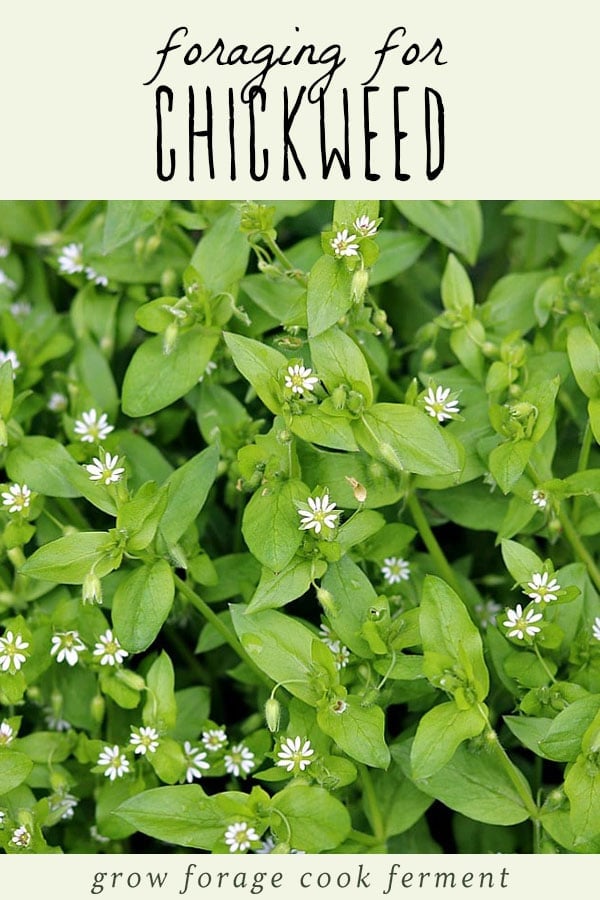
Want to save this post for later?
Wildcrafting Weeds
If you want to learn more about the edible and medicinal weeds that surround us and how to use them, check out my eBook: Wildcrafting Weeds: 20 Easy to Forage Edible and Medicinal Plants (that might be growing in your backyard)!
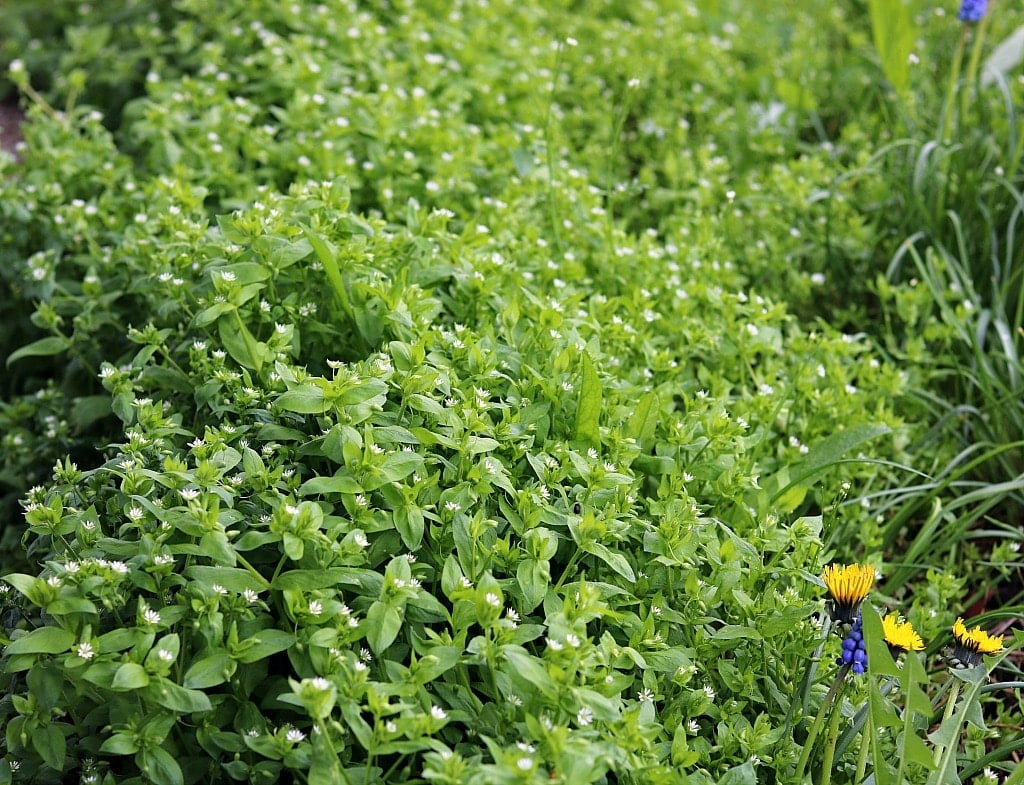
Foraging for Chickweed
Ever since I’ve been a wild food forager I’ve always known about chickweed, but for a long time I didn’t come in contact with it all that much.
This is strange, because chickweed is really quite a common and abundant plant!
It’s not that I had never seen it, I know that I had pointed it out on a few occasions, but I think that more often than not I was simply overlooking it.
Chickweed is a small and unassuming plant, that’s for sure. Thankfully, foraging for chickweed is very easy once you know what to look for. You’ll be seeing it everywhere, maybe even in your own backyard!
Related: What to Forage in Spring: 20 Edible and Medicinal Plants and Fungi, 13 Early Spring Edible Wild Greens
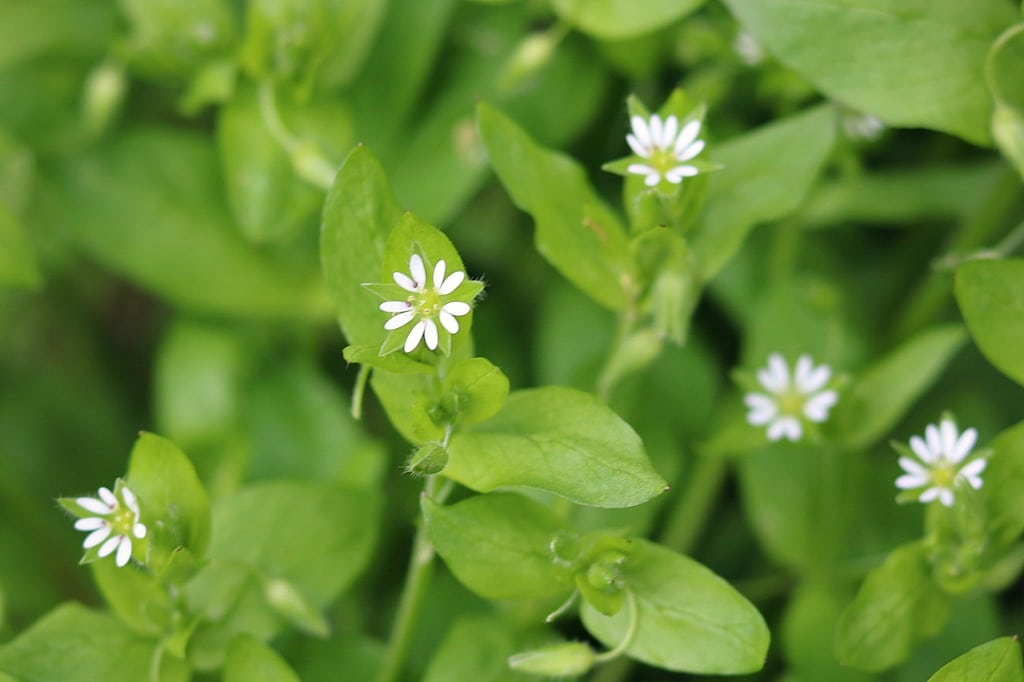
Identifying Chickweed
Chickweed (Stellaria media) is a common plant that comes up in late winter or early spring. It will often make an appearance again in the fall once cooler weather returns, depending on your climate.
It is an annual plant that readily self sows, making it come back year after year.
Chickweed will often grow in large patches, which is part of why it is considered a weed. I was happy to discover a large chickweed patch in our front yard!
Chickweed has small leaves and grows in somewhat of a tangled mat. It has small, white, star shaped flowers with five petals, each one with two lobes.
A single line of fine hairs runs down the stem, which is a great way to positively identify chickweed.
Harvesting chickweed is easy with scissors. Just take a clump in your hand and give it a haircut! It will continue to grow even after being cut several times.
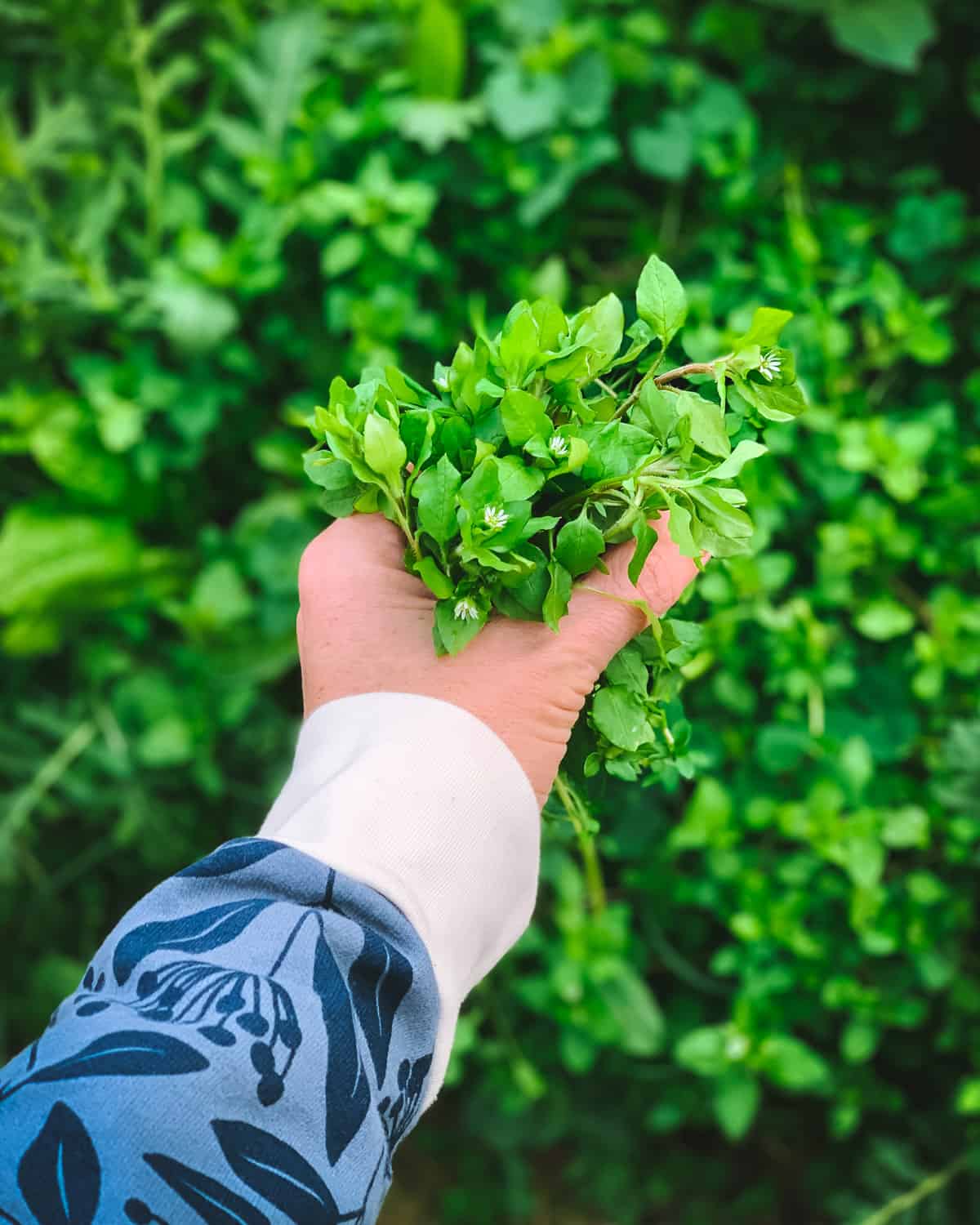
Chickweed Look-alikes
There is really only one important chickweed look-alike to know about, and that is Scarlet Pimpernel (Anagallis arvensis).
Scarlet Pimpernel is toxic and needs to be avoided.
While it has reddish orange flowers which are different than chickweed’s white flowers, its leaves and overall plant structure is very similar to chickweed.
If you are unsure if what you have is chickweed, wait until the plant flowers to make a confident positive identification.
Scarlet pimpernel does not have the single line of hairs down the stem that chickweed has.
There are also some varieties of spurge plants (Euphorbia spp.) that look somewhat like chickweed, but they also do not have the single line of hairs down the stem. They also have a milky sap that chickweed doesn’t have.
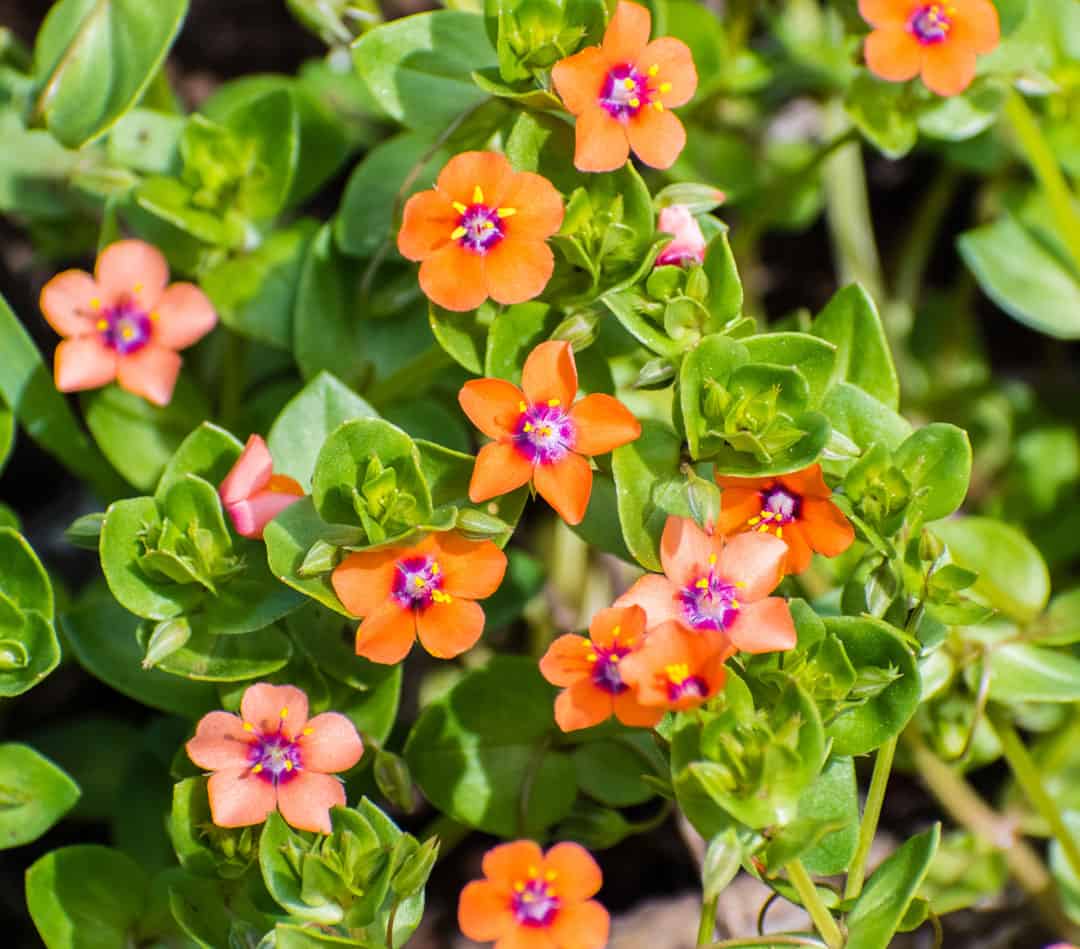
Uses for Chickweed
Chickweed is an amazing plant with so many edible and medicinal uses!
Edible Uses for Chickweed
Chickweed is a highly nutritious edible green that can be eaten raw. Combine it with miner’s lettuce, dandelion greens, and maybe some purple dead nettle or wild violets for a tasty wild weed salad.
Chickweed is also great for adding into smoothies or turning into a tasty chickweed pesto.
Since it usually doesn’t stick around for the hot summer months, you can even blend it up and freeze it for later use.
It is a favorite plant of chickens as well, which is where it got its name!
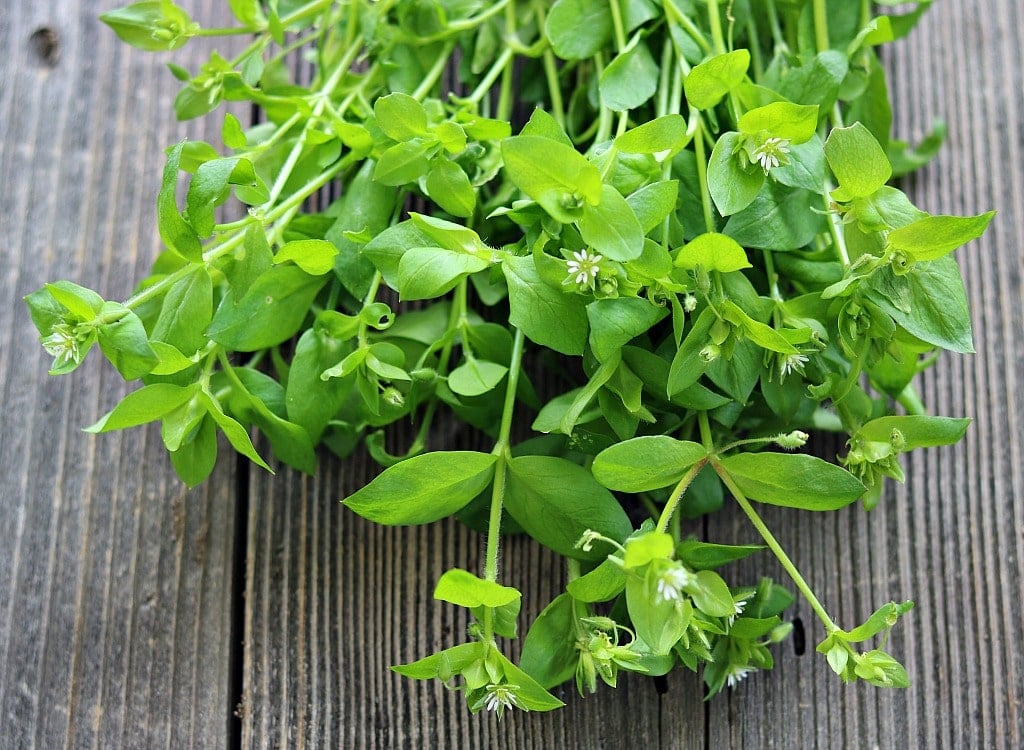
Medicinal Uses for Chickweed
Chickweed is also an amazing medicinal plant. It contains saponins, which makes it cooling and soothing for the skin. It is best used fresh rather than dried for this purpose.
Use chickweed for making into an herbal salve to use on rashes, bug bites, or otherwise dry or itchy skin. Try my recipe for chickweed salve that uses fresh chickweed.
This chickweed bath vinegar sounds like a nice way to utilize its benefits as well.
Chickweed is extremely gentle and a great herb for children. It’s one of the herbs included in my herbal diaper rash salve.
I also have a chickweed lotion bar recipe in my book Healing Herbal Infusions.
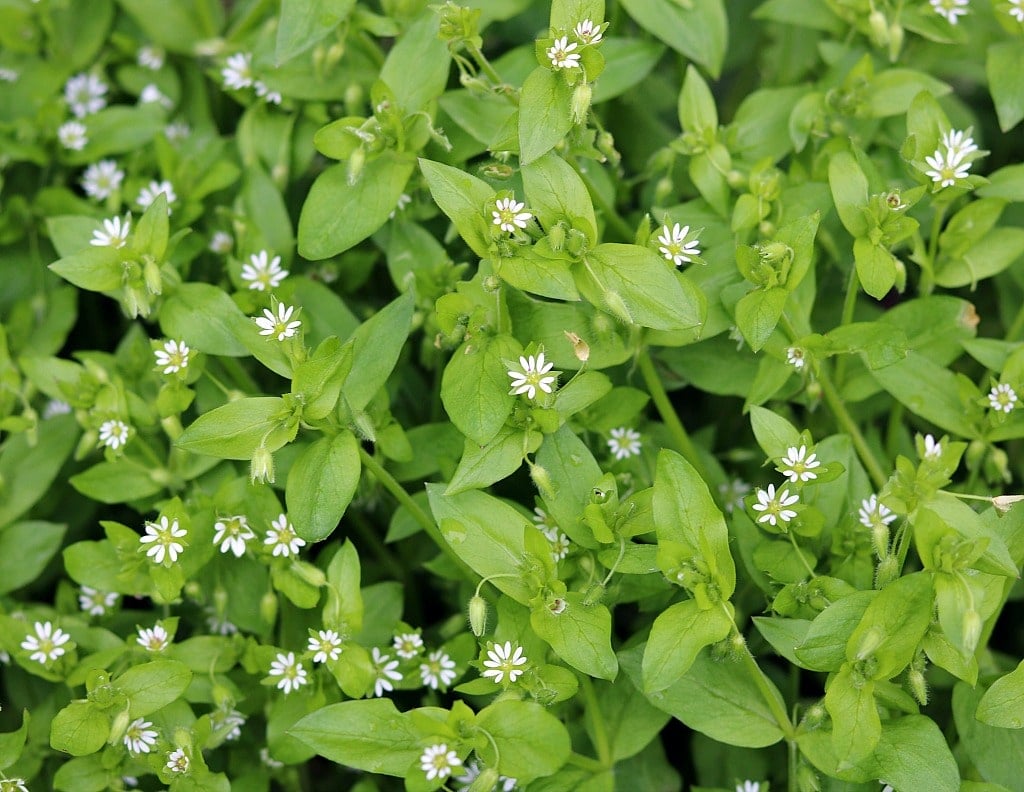
If you can’t find any when you go foraging for chickweed, or if it’s the wrong season, you can always purchase dried chickweed from Mountain Rose Herbs (my favorite place to get high quality, organic herbs).
Have you ever gone foraging for chickweed? What is your favorite way to utilize it?

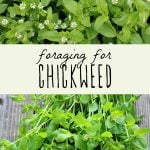

Thank you for sharing this very informative article!
Thank you for the superb article and pics. Is there chickweed and wild chickweed, or its the same thing called by both names? Thanks
chickweed and wild chickweed are only common names. The scientific name is, Stellaria media. They are the same plant.
thankyou all you cleaver people, in our rapidly changing climate we need to be grateful for any thing that grows, i stuggle on a few dollars and i will nurture love and respect any plant that gives me sustanance. chickweed goes in the cooking pot from now on.
Good on you Tiny Tony I too eat as much as i can in my yard. It really does save money and more nutritious. God bless from New Zealand
This year I tried winter gardening. I put Pak Choi, Spinach, Turnips, Mustard, Kale and a couple of other ones. Kale was the best. I watered maybe twice i grew tired of winter gardening. I did not open the greenhouse again until May 5! I was surprised to see there were plants growing. BUT they were different. They were Wild Mustard, Chickweed, (a lot of Chickweed!), Miner’ Lettuce, Wild Spinach. They were huge and going to seed. I was so sorry I had neglected that house for so long. I lost a lot of valuable resources. I am gathering seeds now.
Chickweed grows all throughout my yard. Behind my garage, it has been left to grow and some plants have leaves up to 2 or so inches! This is by far one of my favorite plants growing in my yard.
Yes, the mouse ear’s stem is slightly darker. It is edible just as the common chickweed.
I have 1-2 inch long weeds growing in patches like mad all over my moist lawn on the east side of the Big Island of Hawaii this spring. Is it Chickweed? Here’s a picture of a couple next to a guitar pick. https://drive.google.com/file/d/10uJ1dsMLK-bI_tBs5PfImq8bg4y_Q3wV/view?usp=sharing
Hi Willy. No, I don’t believe that’s chickweed. There are a lot of plant ID apps available for your phone where you can upload your image. While they’re not 100% accurate, they can give you a good direction to look in for properly IDing your weed.
Pretty sure it’s not chickweed. (sorry) The stem on the plant in the picture is significantly thicker than how chickweed grows. Chickweed stems are thinner and extremely fragile (almost like a soft grass).
Chickweed has one line of hairs running along it’s stem. Sorta like a mohawk. Try snapping open the stem. Chickweed has two layers of stem. The inner one should sheathe and the outer will come out. The inner one will be stretchy like elastic
I believe I may have found mouse ear chickweed. Is this the same as common chickweed?
While working in gardening shop I found it to enjoy acid soil. That told me a lot because this plant is growing almost everywhere on our land, and it’s so fun to pull it for chickens. Now I can look at it in different eyes. Your post showed how important such weed could be. Thank you.
Sorry…but is chickweed the same as the Florida Betony which is extremely invasive! My mother has tried for years to rid her lawn of this. It sure looks like it. Thanks
Nope, that’s a totally different plant :)
Thanks for sharing this! I was wondering if you know if it is OK to give my dog? I feed her homemade food and like to add beneficial herbs!
Thank you for sharing your knowledge with us i been using chickweed forever it is also good forvif u wanto to loose weight
Do you eat it raw or how are you using it to loose weight?
I want to thank you for the beautiful pictures and the information. I am quite new to foraging. I feel that it would be quite the survival kit to know about foraging and drying for the winters. These days we have no idea what the future may bring. I would like my children and granchildren to have this knowledge. Survival of the fittest you know.
I am growing chickweed from seed! I am converting my lawn from grass to edible ground covers. So far it is only a small patch, however, I have more seeds and plan to spread it out further this spring!
That is an excellent idea. and no mowing!
That’s awesome can you share photos?
I absolutely tear my hair out over this noxious spreading weed. . It wreaks havoc on 2 of my flower gardens & the vegetable garden every year. Henpeck is my other culprit.
I bought basil at the farmers market and wondered what else it was in the bundle. Your pictures identified it perfectly. Thank you.
I teach survival and enjoy your informative Blog. Thanks for the wild edibles recipes..
Just a note of caution…be aware that chickweed often grows where city folk walk their dogs. And for Canadians…Richters Herbs in Ontario and Harmonic Arts in BC are excellent sources of the dried herb for out of season use. Mountain Rose is fantastic, however, shipping is expensive, often incurs customs charges and some herbs are not allowed across the border. But it’s so easy to pick and dry, why not create your own annual store.
I also love your beautiful, clear pictures. They are very helpful.
Thank you, Joyce
I love your clear pictures that make this plant so easy to recognize. Too many foraging sites have terrible pictures. We have made the pesto and it is delicious. Love your site. Thank you for sharing your knowledge and passion.
Debora